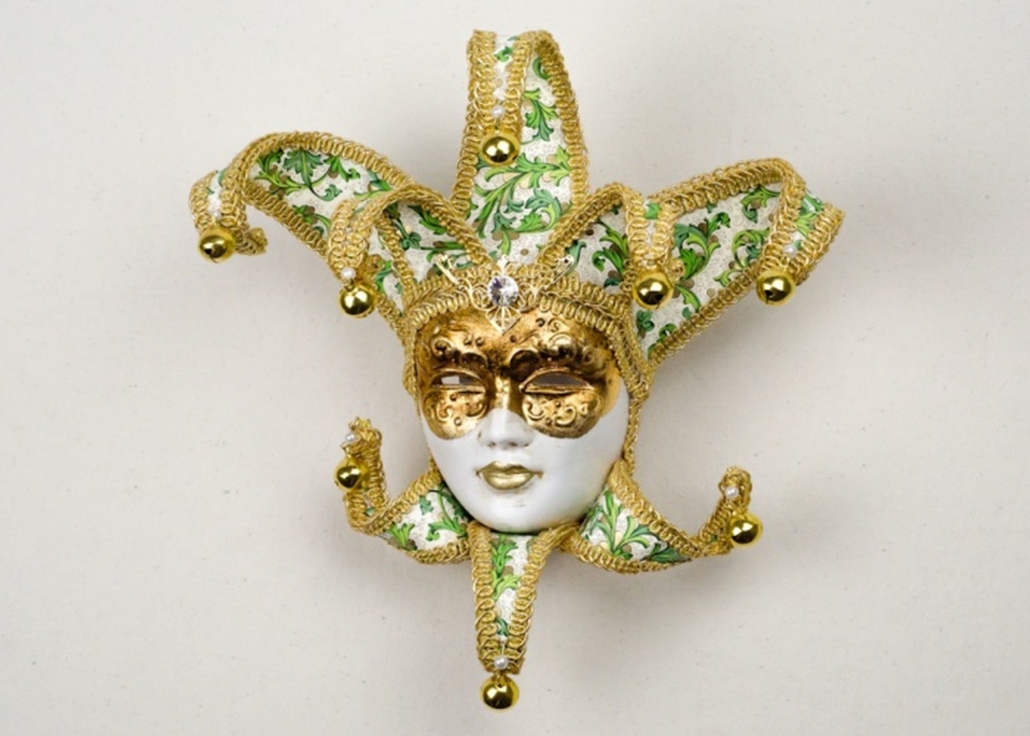
NEW YORK – Venice, Italy a cluster of isles on the Adriatic Sea, is traditionally known as La Serenissima, The Most Serene. Every year, however, during the Carnival of Venice, she sheds her inhibitions.
Masks, an integral part of Venetian merrymaking, have long reflected the city’s vices and vagaries. They apparently date from 1162, when the city, celebrating a major military victory, erupted into free-for-all revelry. While dancers, musicians, acrobats, and jokers enlivened squares, townsfolk, behind simple, molded full face masks, wandered about impersonating peasants, ghosts, she-devils, and courtesans.
According to law, Venetians could masquerade from December 26, the festival of Santo Stefano, until the Carnival in late February. Since the city was rife with gambling, clandestine romances, hush-hush business dealings, and political intrigue, many also sported masks to ensure anonymity. Their use not only evaded the city’s highly structured dress laws, created to maintain class divisions. It also allowed everyone enjoy the carefree, adventuresome ways of Venetian aristocrats– and vice versa. Masked servants could be fine nobles; demure wives could be courtesans.
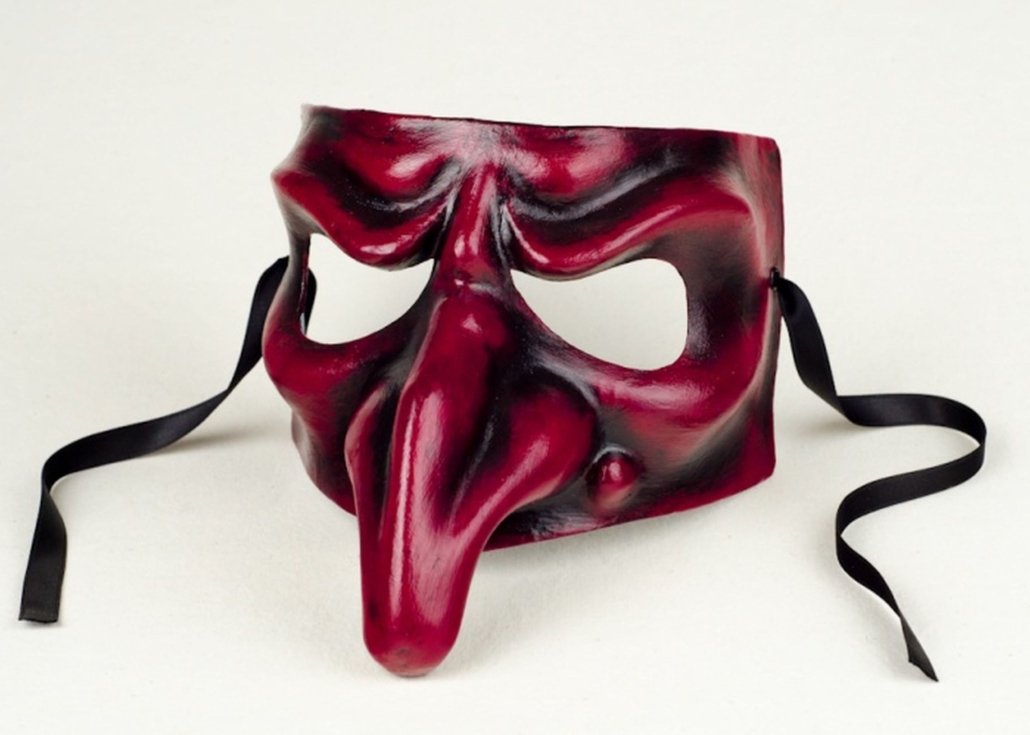
Within decades, however, masked gambling and convent visits banned. So was wearing slinged masks, which enabled lovelorns to lob scent-filled eggshells at heartthrobs. Despite these restrictions, the growing demand for masks attracted many to the trade. By the mid-1400s, mask makers, organized into guilds, had become respected members of Venetian society.
Within a century, masks became as opulent as the pearled, beaded, feathered, tasseled, and ruffled fashions of the day. Venetians donned them not only at Carnival time, but also for social gatherings, masquerade balls, artistic performances, and state occasions.

Through the 1700s, as the city declined economically, politically, and militarily, masked celebrations, though frequent and exuberant, became increasingly decadent. Following the fall of the Venetian Republic in 1797, both its Carnival and mask making were banned.
Since 1979, the city has experienced a cultural and historical renaissance, crowned by its annual Carnival of Venice. As a result, masks, made in local workshops, peer from nearly every shop and kiosk year round. These are no longer made of lace, leather, canvas, or waxed cloth, however. Most, like the Plague Doctor mask, are papier-mache.
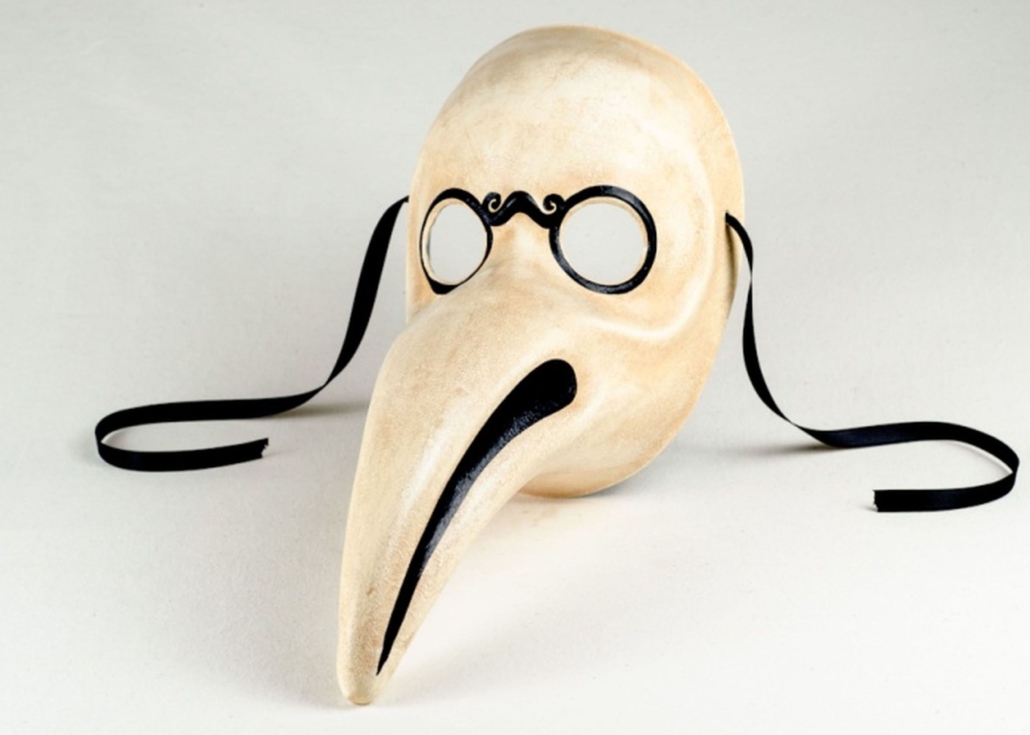
This bizarre guise, which features spectacle-like eye-holes and long, hollow “beaks” stuffed with fragrant rose petals, lemon balm, cloves, camphor, and mint, was worn while tending 16th-century plague victims. It was customarily paired with protective, broad-brimmed hats, heavy, waxed-leather overcoats, close-fitting leather undergarments, thick gloves, and boots. In addition, some good souls carried canes, so while examining patients, they needn’t touch them. Today, Carnival merrymakers don these fearsome, forbidding costumes as mementos of mortality.
The stark, full-face Bauta mask offers full anonymity. Yet as of old, its square, protruding jaw allows merrymakers to freely breathe, eat, and talk. The beribboned, full-face Volto mask is not only heavier than many, but also fits far more tightly. Though shaped traditionally, both types are often enhanced with stunning designs, vibrant hues, and golden highlights.
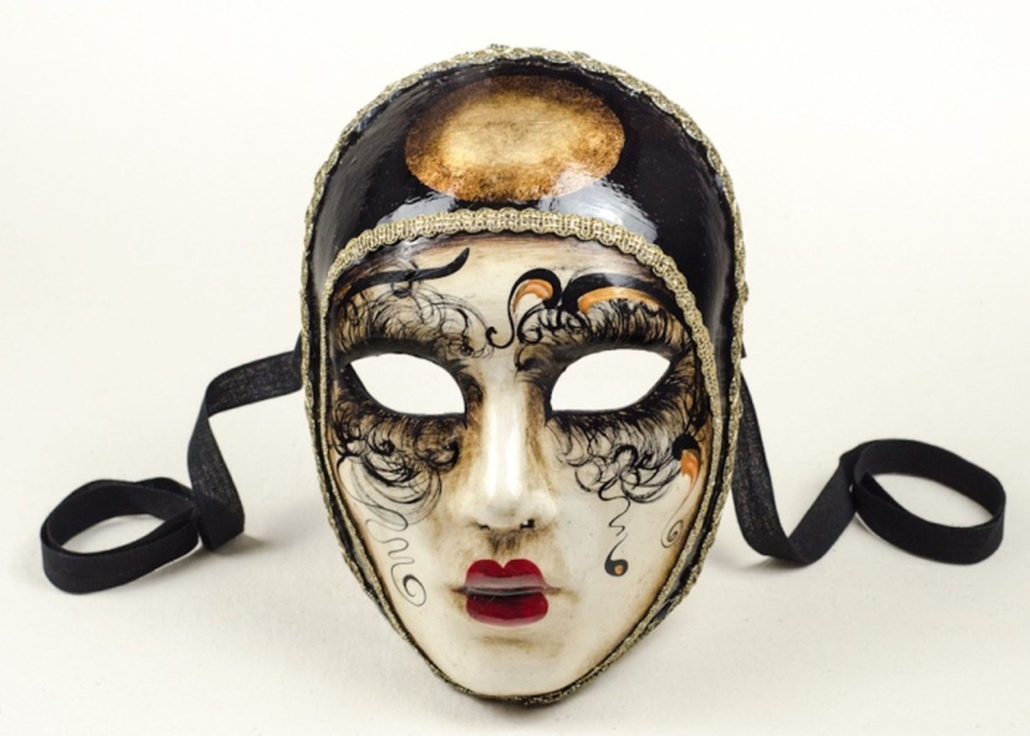
Other popular contemporary Carnival masks celebrate stock characters from the Commedia dell’arte, an improvisational theater form that has charmed Venetians for centuries. All traditionally cover half the face which, historically, allowed actors to speak. Contemporary, comfortable Colombinas, named for a Commedia maidservant, often feature extravagant, feminine flourishes like fans, dyed peacock feathers, fine fabrics, sparkling gems, and gold leaf scrolling.
Other Commedia masks feature highly exaggerated, recognizable features that reflect their characters’ personalities. Harlequins, for instance, display raised, rounded brows, snub noses, bumps on their foreheads to signify devils’ horns. Pantalones, which depict greedy merchants, are known for their bold, bent noses, slanted eyes, and world-weary, wrinkled brows. Chubby-cheeked Pulcinella masks, traditionally made of leather, feature wrinkled, protruding brows above large, bulbous noses. Zannis, despite their menacingly low foreheads, bulging eyebrows, and particularly long, curved noses, portray a beloved Commedia dell’arte comic character.
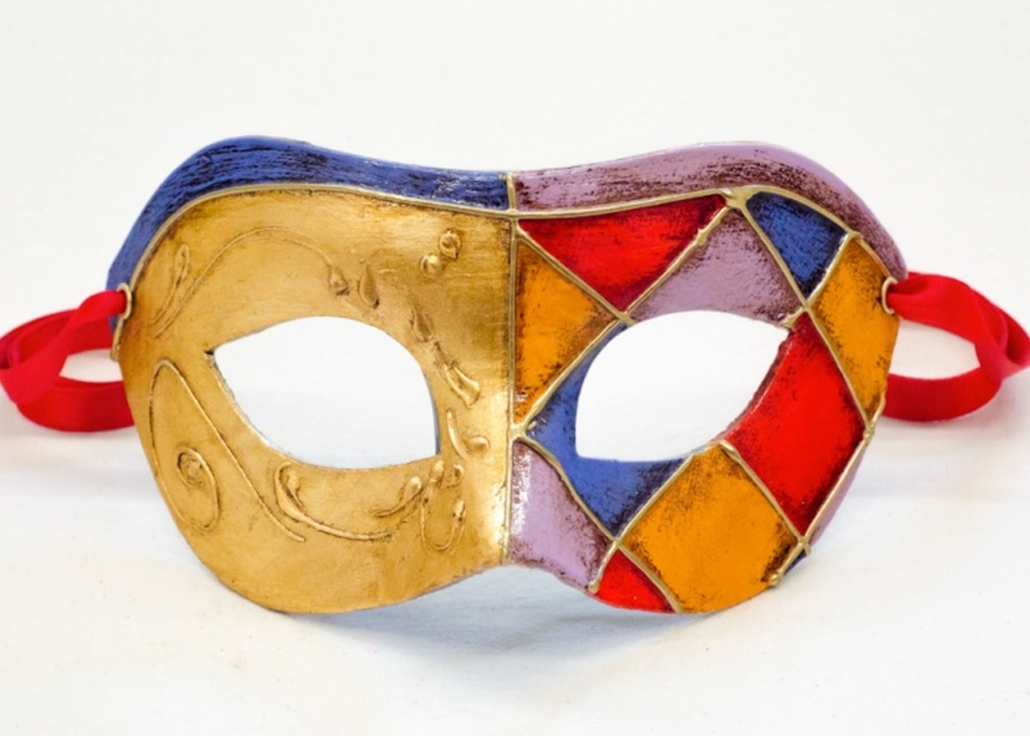
Though traditional Venetian masks remain highly popular, imaginative contemporary ones have proved extremely enticing. Half-plain, half-painted flights of fancy, for instance, seamlessly mesh past with present. Feathered creations sparkle with sequins and gold scrolling. Captivating confections display delicate decoupage or opulent Florentine fans. Whether simple or sumptuous, all are collectible treasures.
# # #



